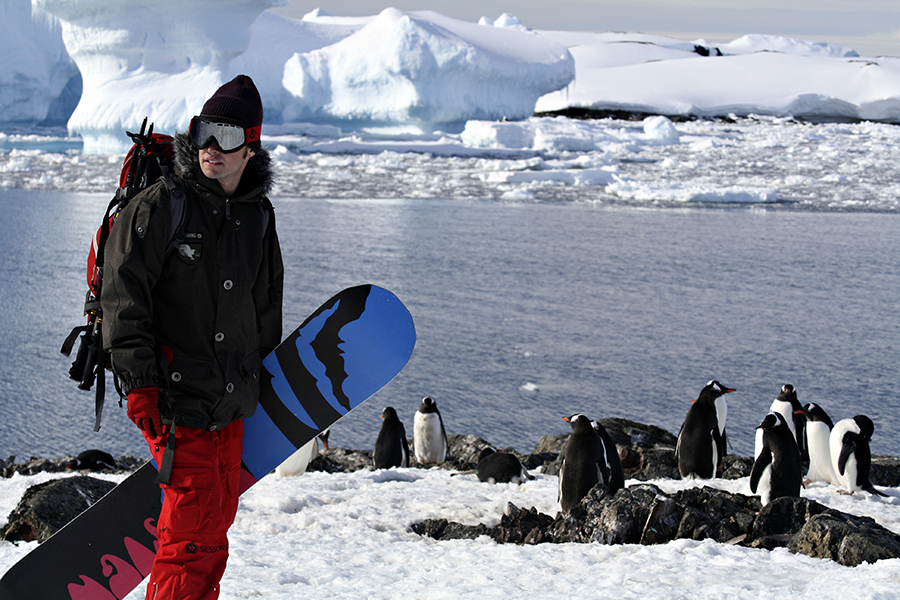A decade ago, professional snowboarder Sean Busby was lying in a hospital bed, rail thin, muscles atrophied, wondering how a bulletproof 19-year-old athlete with Olympic aspirations had been reduced to the 119-pound wraith splayed out before him.
He eventually found the answer, but not before his sponsors abandoned him, his Olympic hopes were dashed and a dangerous medical misdiagnosis nearly killed him.
Busby, 29, of Whitefish, lives with Type 1 diabetes – a severe version of the metabolic disease that requires regular doses of insulin to survive, not Type 2, the far more common variety associated with obesity, older age and poor eating habits.
But Type 2 is exactly what a succession of doctors told Busby he had to contend with, a dangerous misjudgment that would have ended his life had the disease been more advanced.
For months before the misdiagnosis, the phantom disease haunted Busby, who couldn’t understand how he could feel so energy deprived and cycle through regular bouts of violent illness while conditioning at so high a level.
“I grew up never being sick. And in the winter season of 2003-2004 I was training in Steamboat Springs, Colorado, and started getting these on-and-off symptoms, nausea, vomiting. In the spring of 2004 I was at U.S. National Championships in Breckenridge, came back and started vomiting nonstop,” Busby said.
He lost 30 pounds in 12 days and contracted severe pneumonia due to aspirating vomit. He returned to California to live with his parents, whose health insurance covered him, and continued to lose weight. None of his clothes fit him anymore, and it seemed he was desperately thirsty around the clock.
At first, he attributed the unrelenting thirst to his high-volume training regimen he had been maintaining in Breckenridge, Colorado. The intense bouts of uncontrollable vomiting, doctors told him, would pass.
When a glucose tolerance test revealed abnormal lab results, a doctor told him he had Type 2 diabetes, but that he could manage the disease.
Busby lived with an incorrect diagnosis for three months, while his sponsors left him in droves.
“One sponsor told me me they didn’t want to support an athlete who was chronically sick,” he said. “I became extremely depressed.”
Type 1 diabetes is an autoimmune disease in which sufferers are dependent on insulin, while sufferers of Type 2 diabetes, which accounts for more than 90 percent of all diabetes, can often feel better by controlling their diets and don’t always need insulin.
Although still feeling weak, Busby decided he needed to return to the training center in Colorado and rebuild himself. He booked a flight and arrived at the airport, but nearly passed out boarding the plane and had to be rushed to the hospital.
It was there that a new medical team gave him the correct diagnosis, and the insulin to combat the disease.
“That first shot of insulin was the most amazing feeling in the world. I felt like a human again. I could instantly feel the nutrition coursing through my body,” he said.
Instead of lingering over the bitterness and frustration of having been misdiagnosed, Busby began thinking of other ways to use his athletic prowess to help others with diabetes while still pursuing his passion for snowboarding.
He set his sights on the backcountry, where his love of the mountains first emerged in high school while training in Whistler, British Columbia.
“I lived with a family that introduced me to the backcountry and I just fell in love with that side of the sport,” he said. “That really planted a seed that grew over time.”
Busby founded a charitable organization, Riding on Insulin, which raises money so that kids and adults with Type 1 diabetes can enjoy the same mountain adventures as Busby.
Currently, the program offers 18 camps in the U.S., Canada, New Zealand and Australia.
“The program is geared toward teaching them about alpine touring while managing their diabetes and not letting the disease become a pitfall,” he said, adding that Riding on Insulin also offers a suite of camps for backpacking, hiking and road biking.
“We are definitely founded on winter sports but we’re expanding all of the time,” said Busby, whose wife, Mollie, runs the nonprofit full time.
He says his OmniPod, a tubeless insulin pump that allows him to regulate his insulin without the constant injections that many who have the disease need, has allowed him to continue to push boundaries in the backcountry, because it is not subject to freezing and gives him the flexibility to make snap decisions without endangering himself and others.
Last year, while riding the highest mountain range in North Africa, Busby became the first person with Type 1 diabetes to snowboard the backcountry on all seven continents. He was touring on his split board in the High Atlas mountain range, in Morocco’s Toubkal National Park, and it occurred to him how far he’d come.
A decade earlier, he’d been solely focused on how far he’d fallen.
“It blew my mind. We would be skinning right up to these rookeries of penguins. There were tens of thousands of penguins, and as you climb you would look back and see humpback whales, and glaciers calving and all these speckled dots of penguins,” he said. “I felt like I was on another planet and I was so thankful.”
Learn more about Riding on Insulin at www.ridingoninsulin.org and follow the adventures of the Busbys on their blog at www.twosticksandaboard.com
